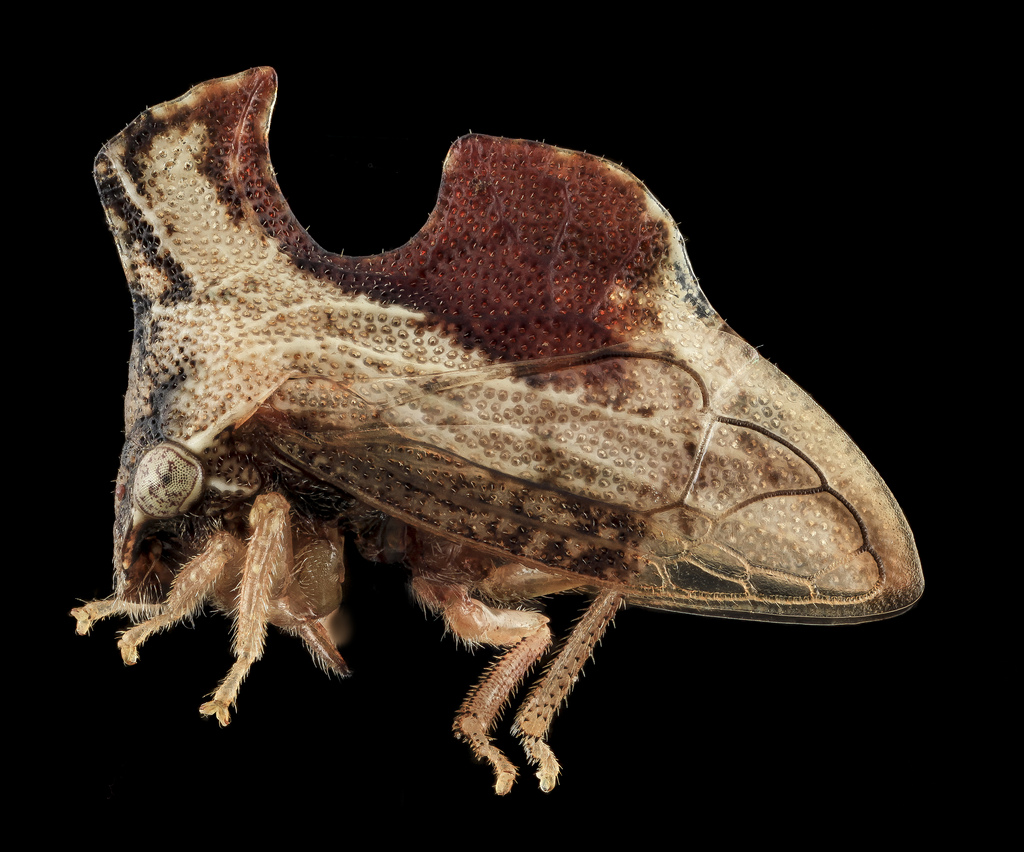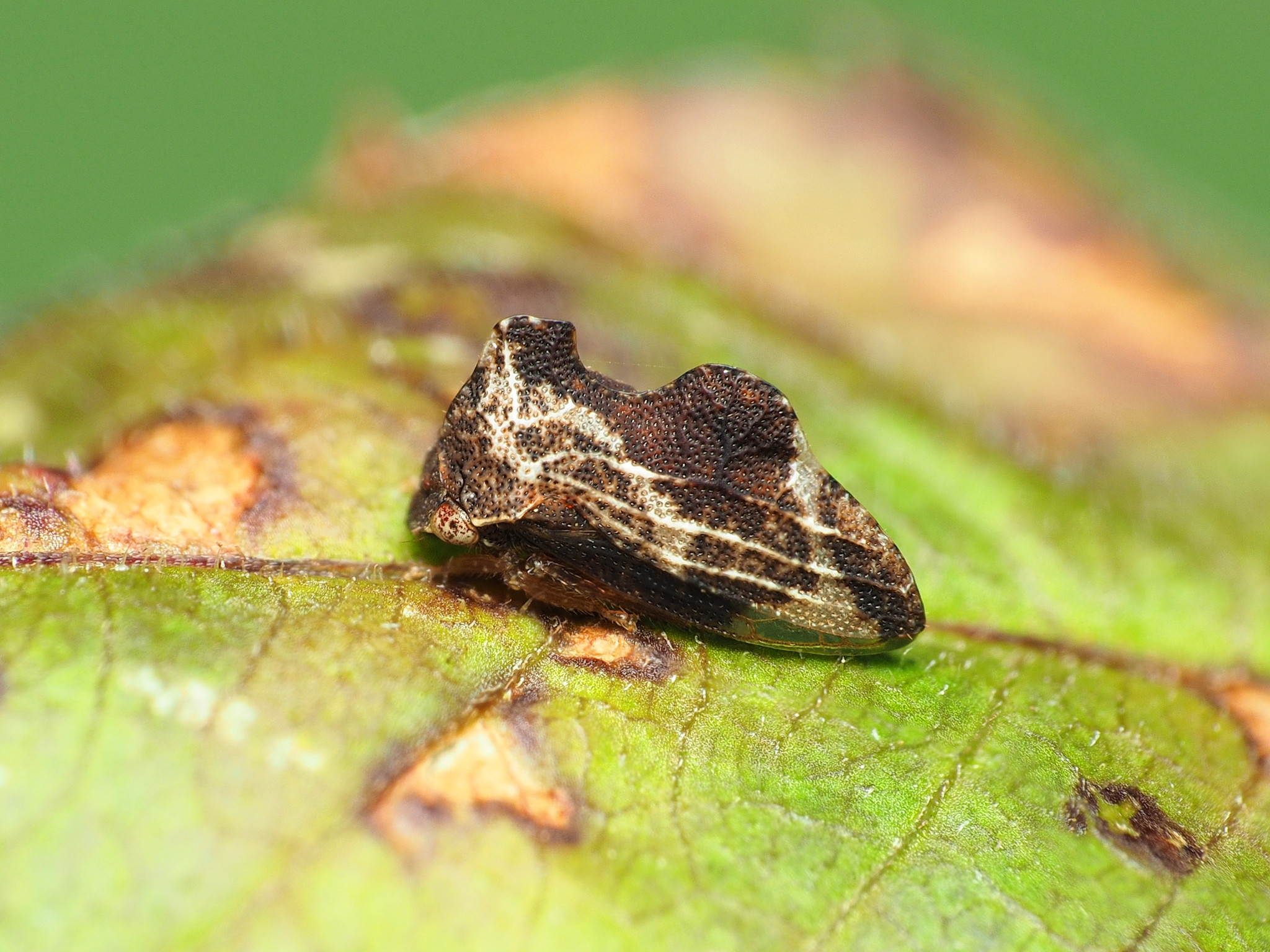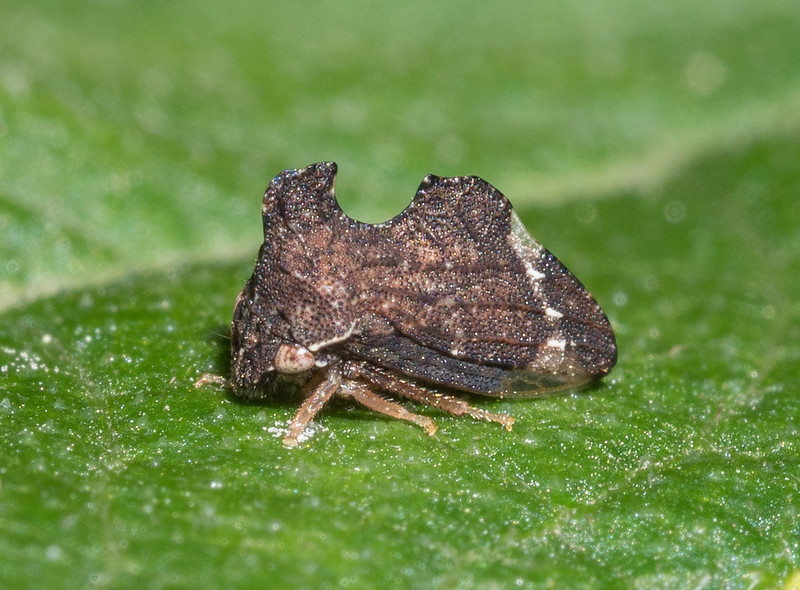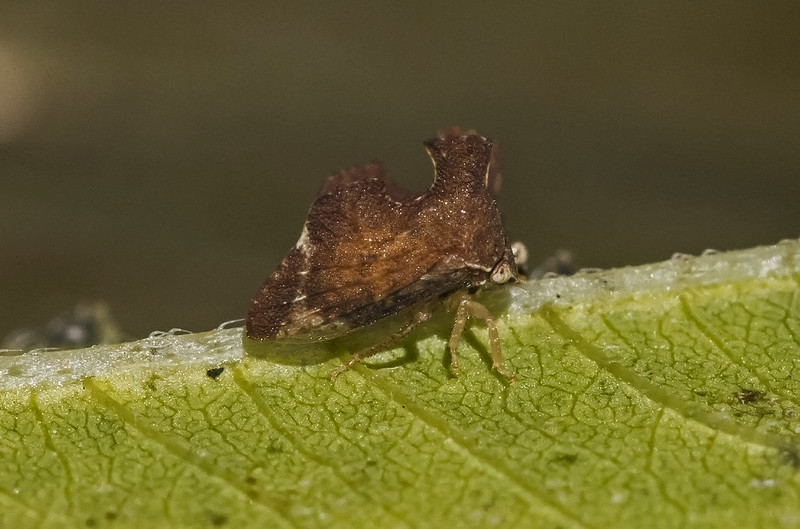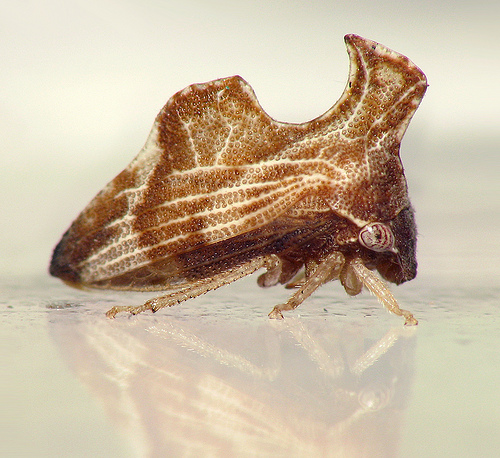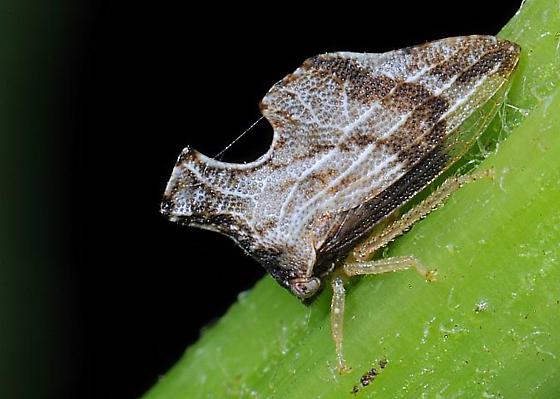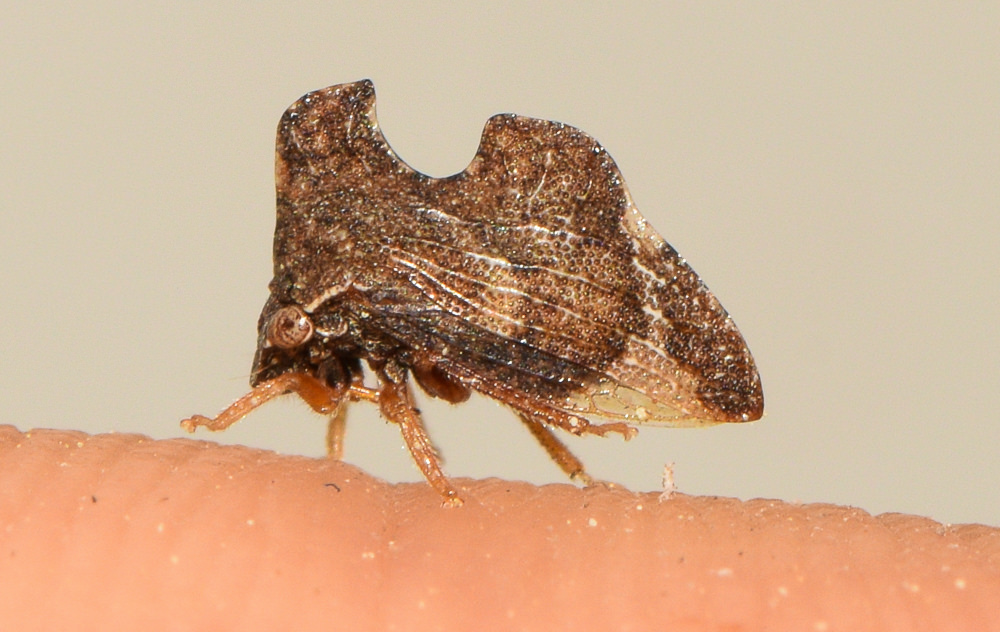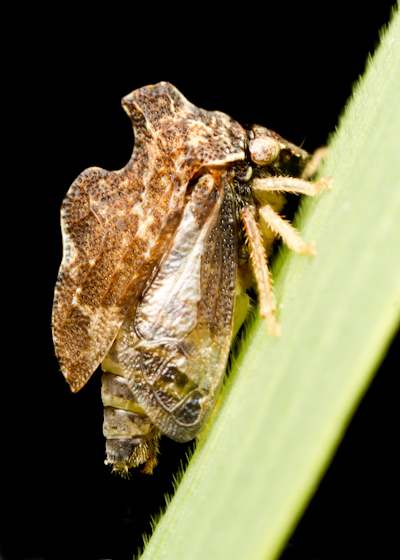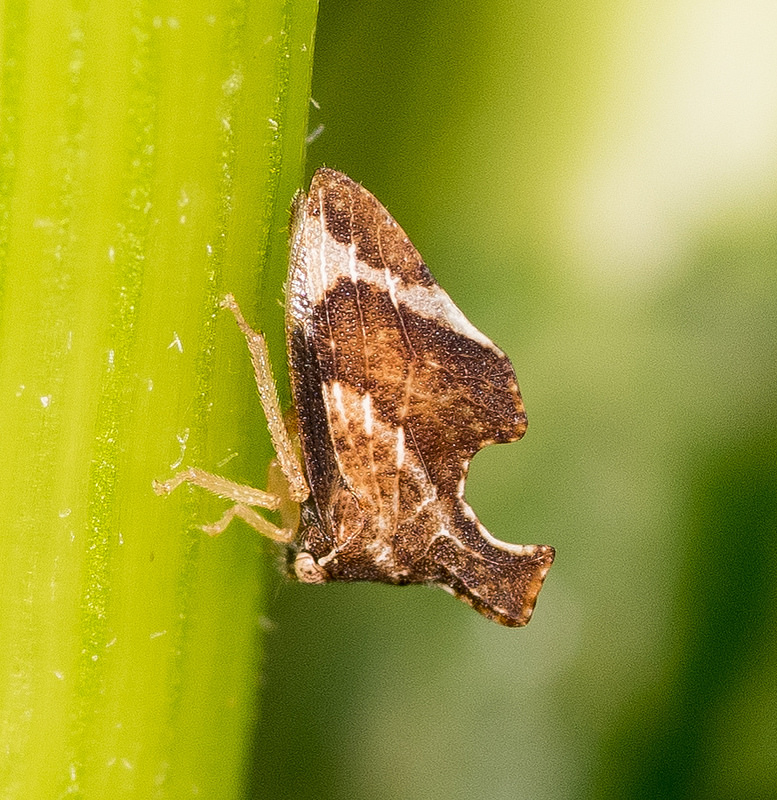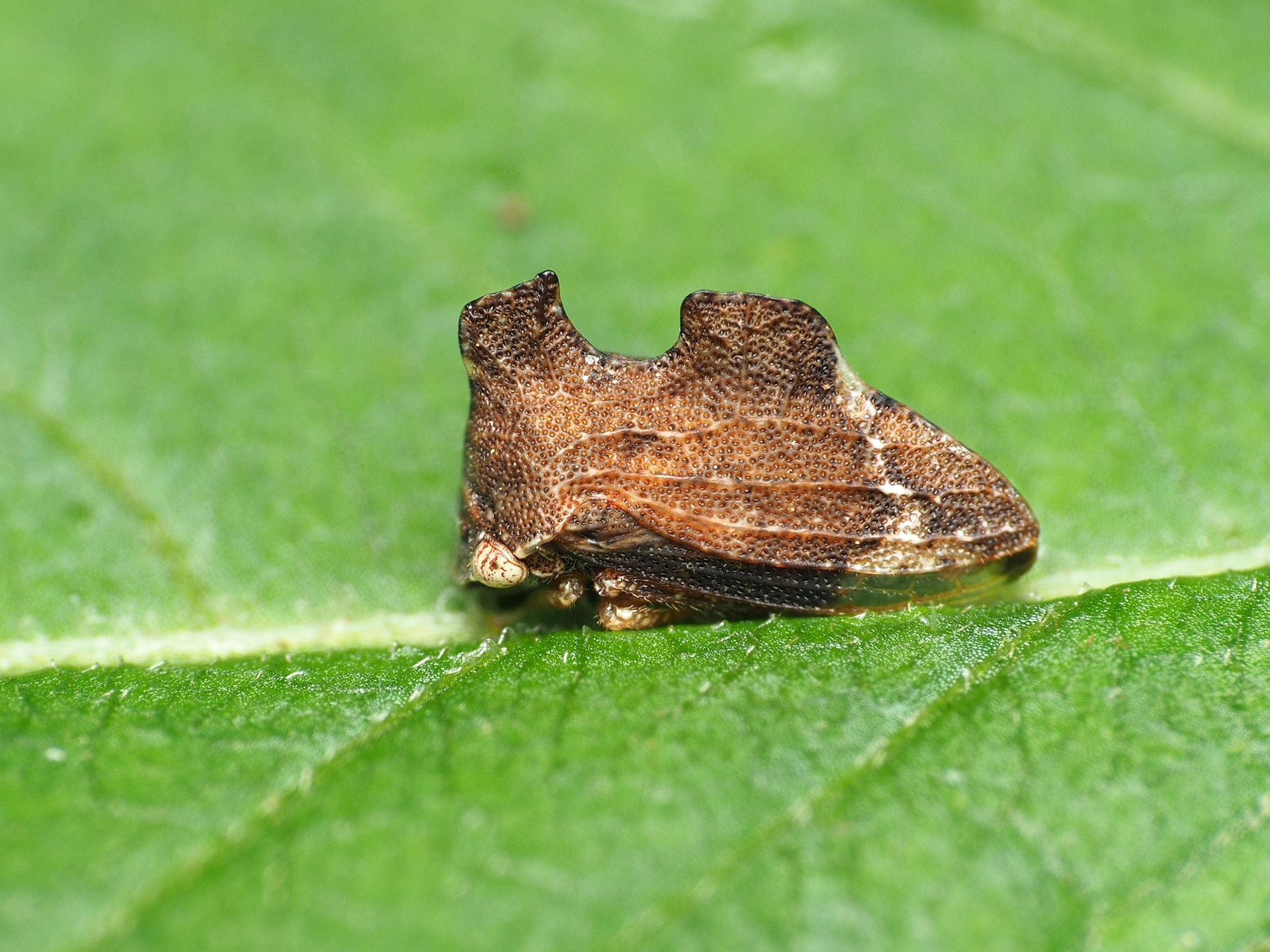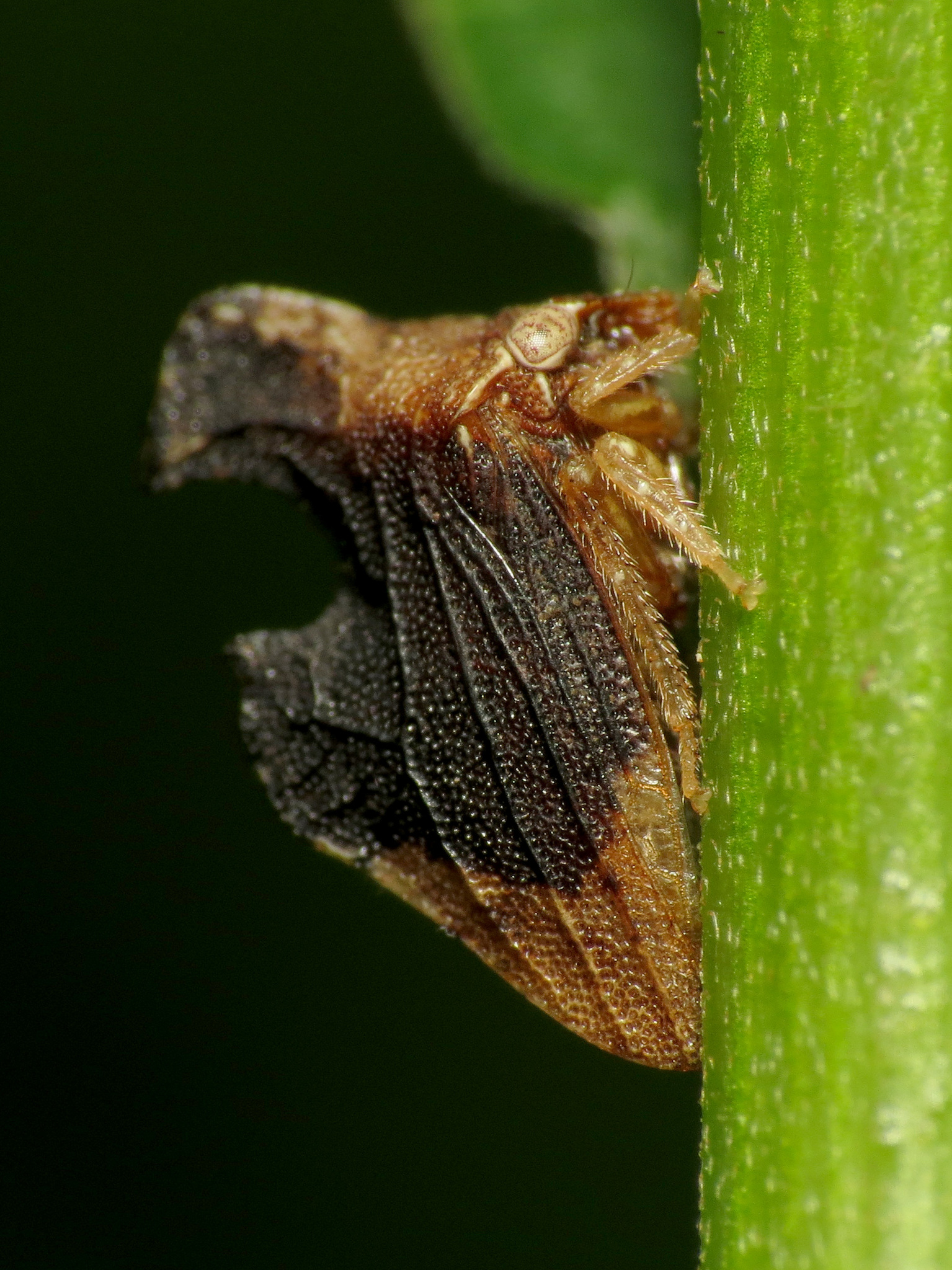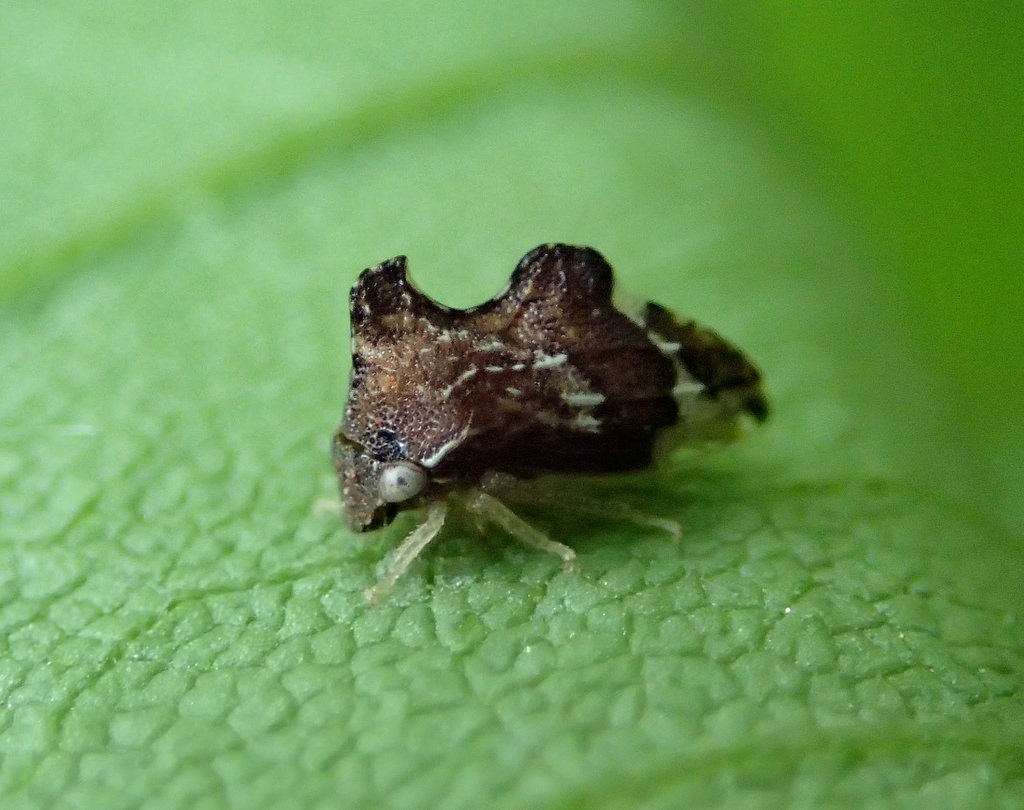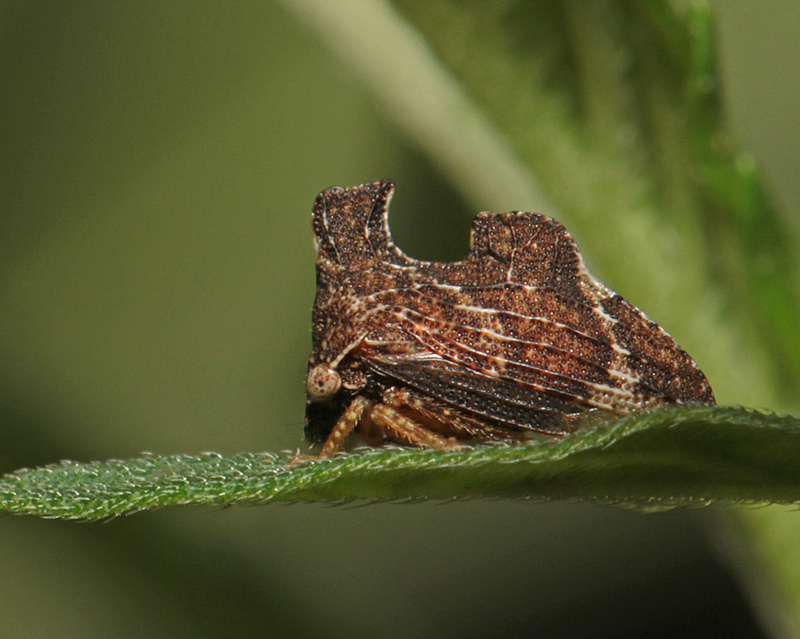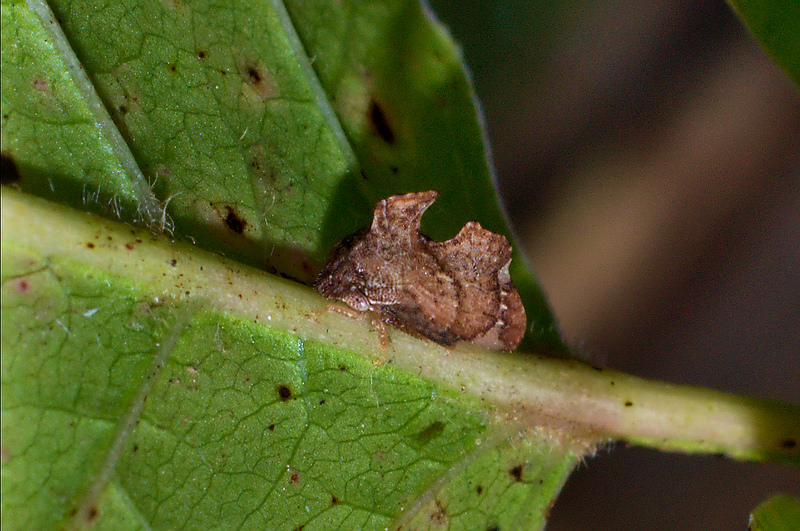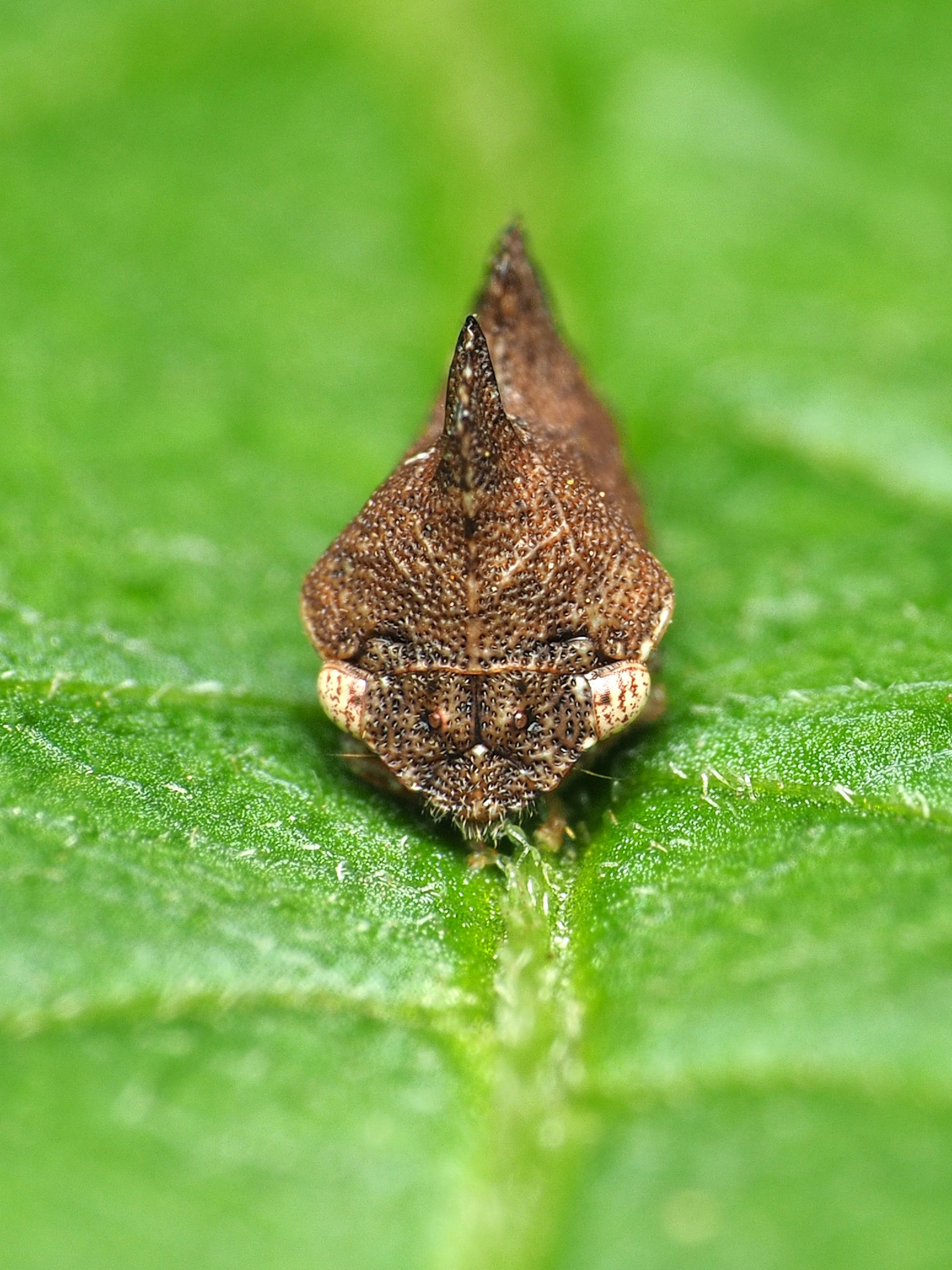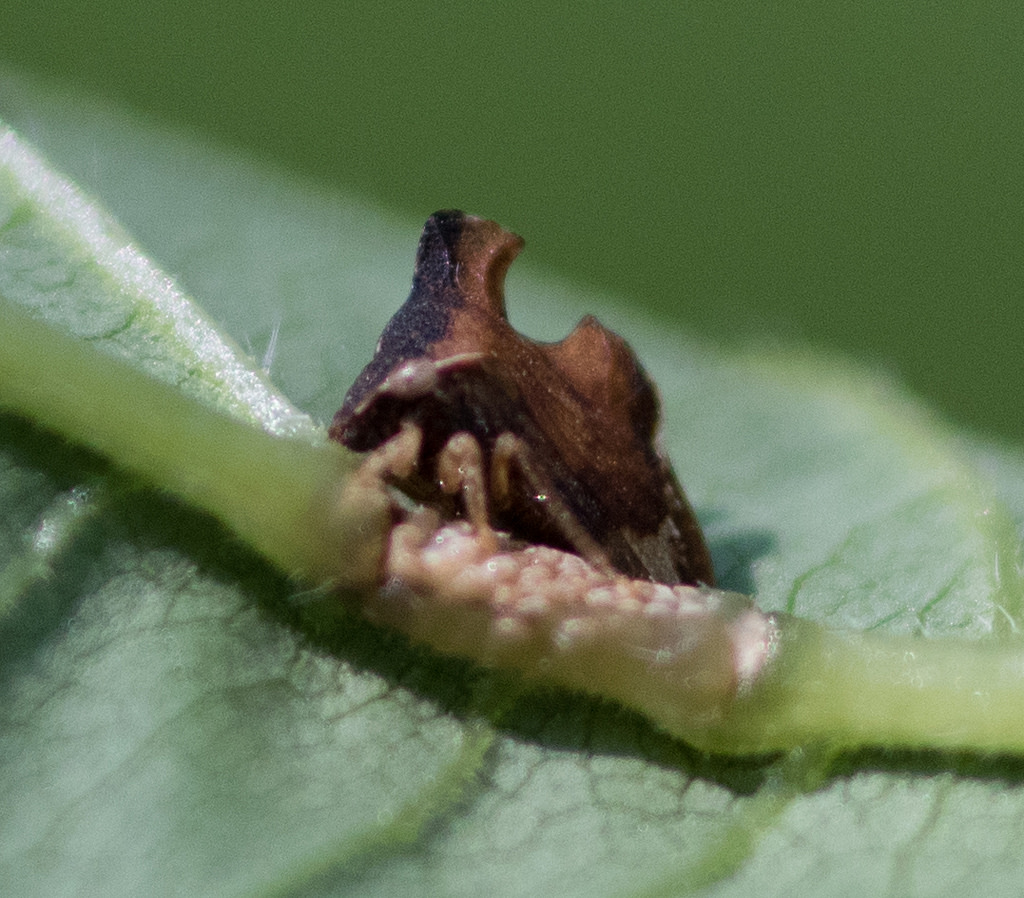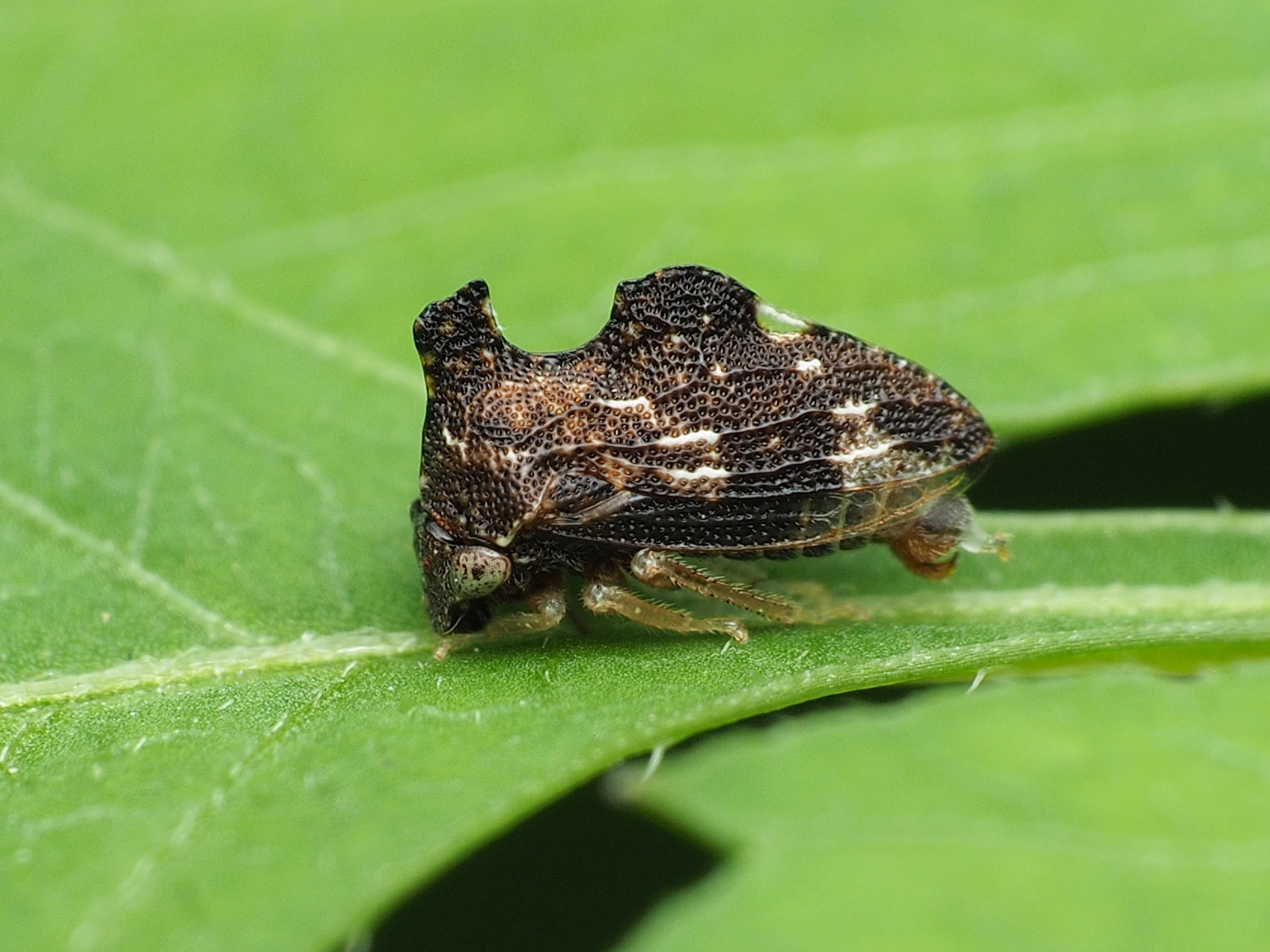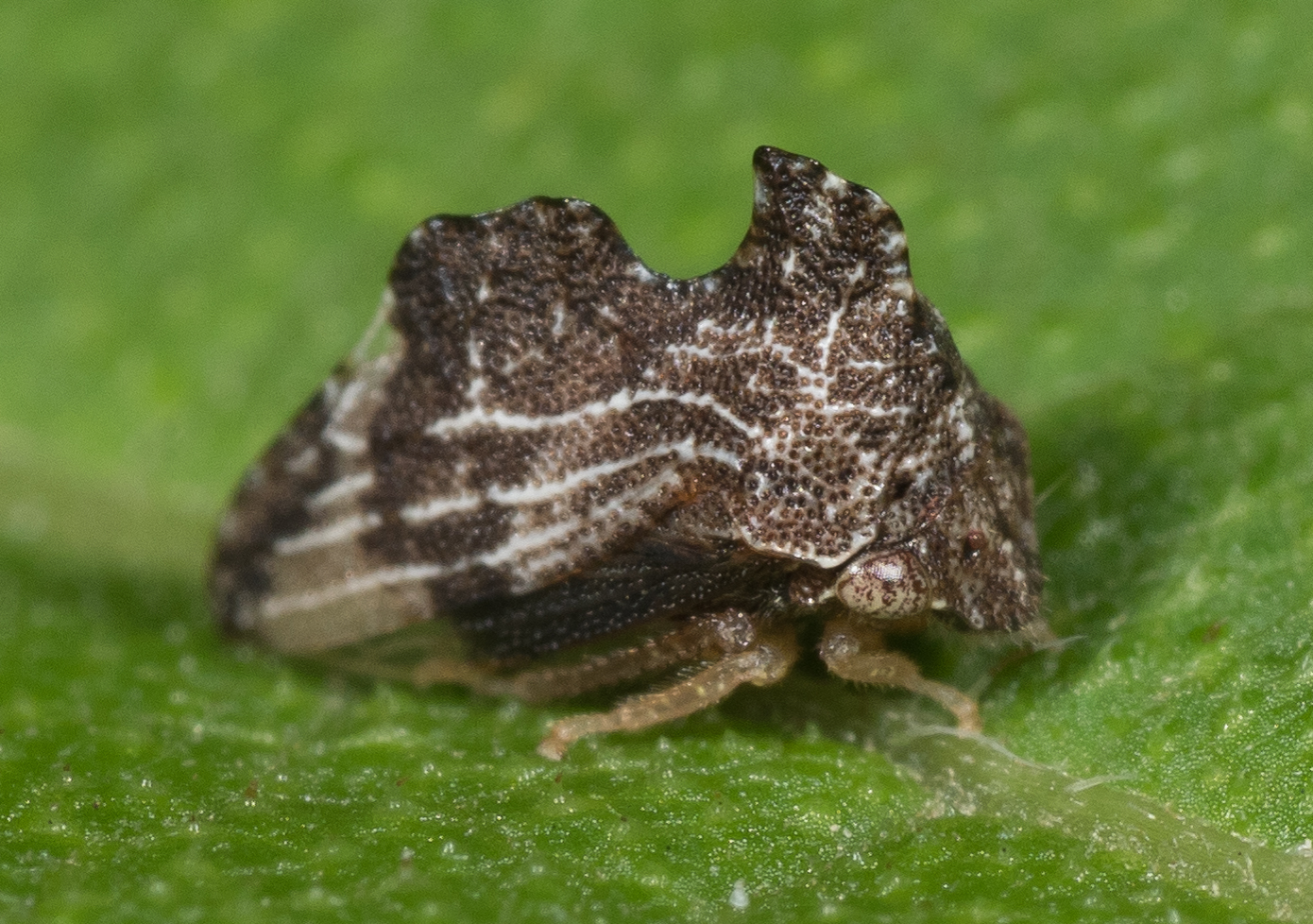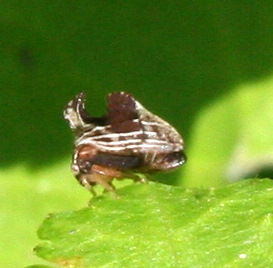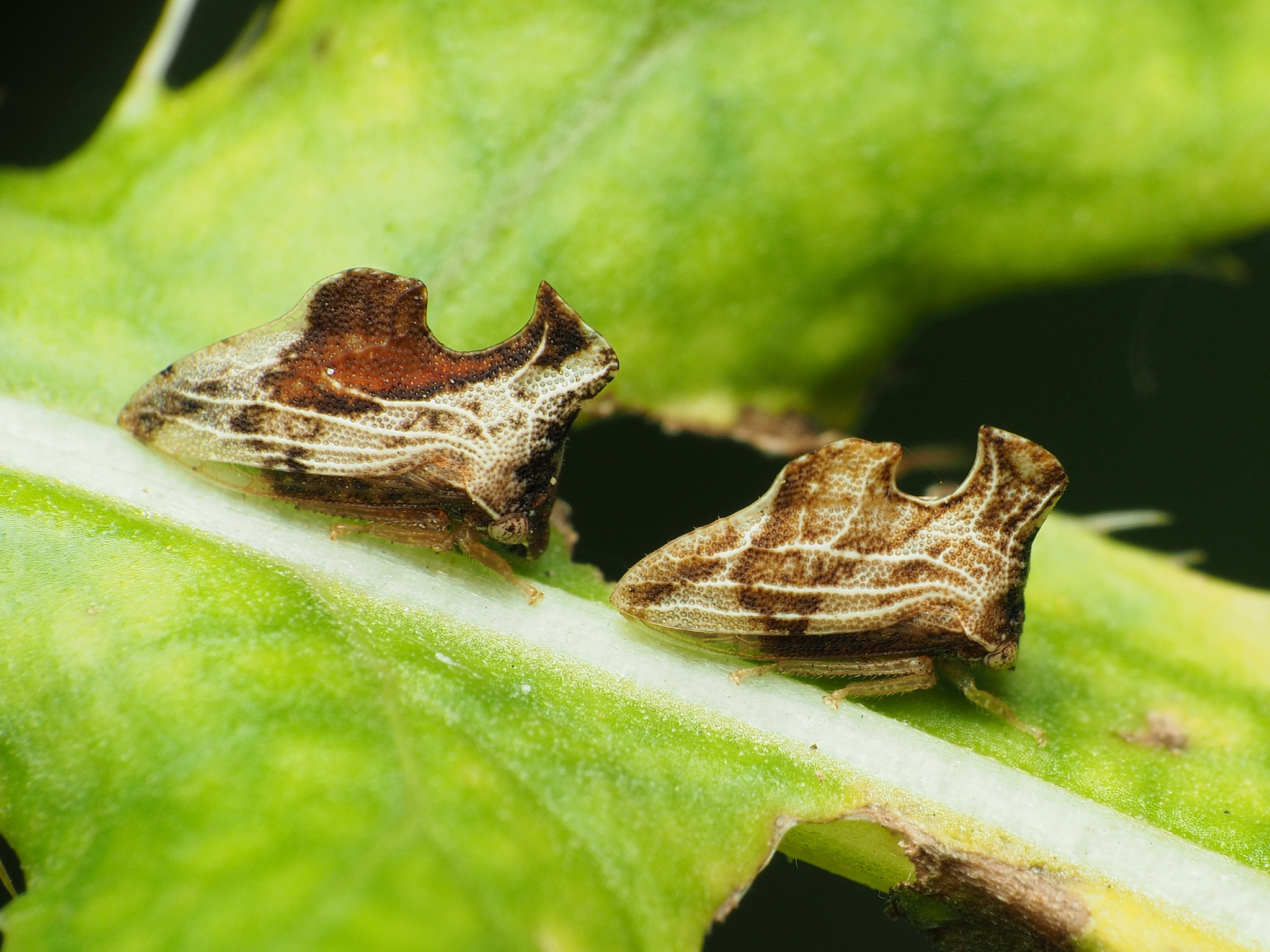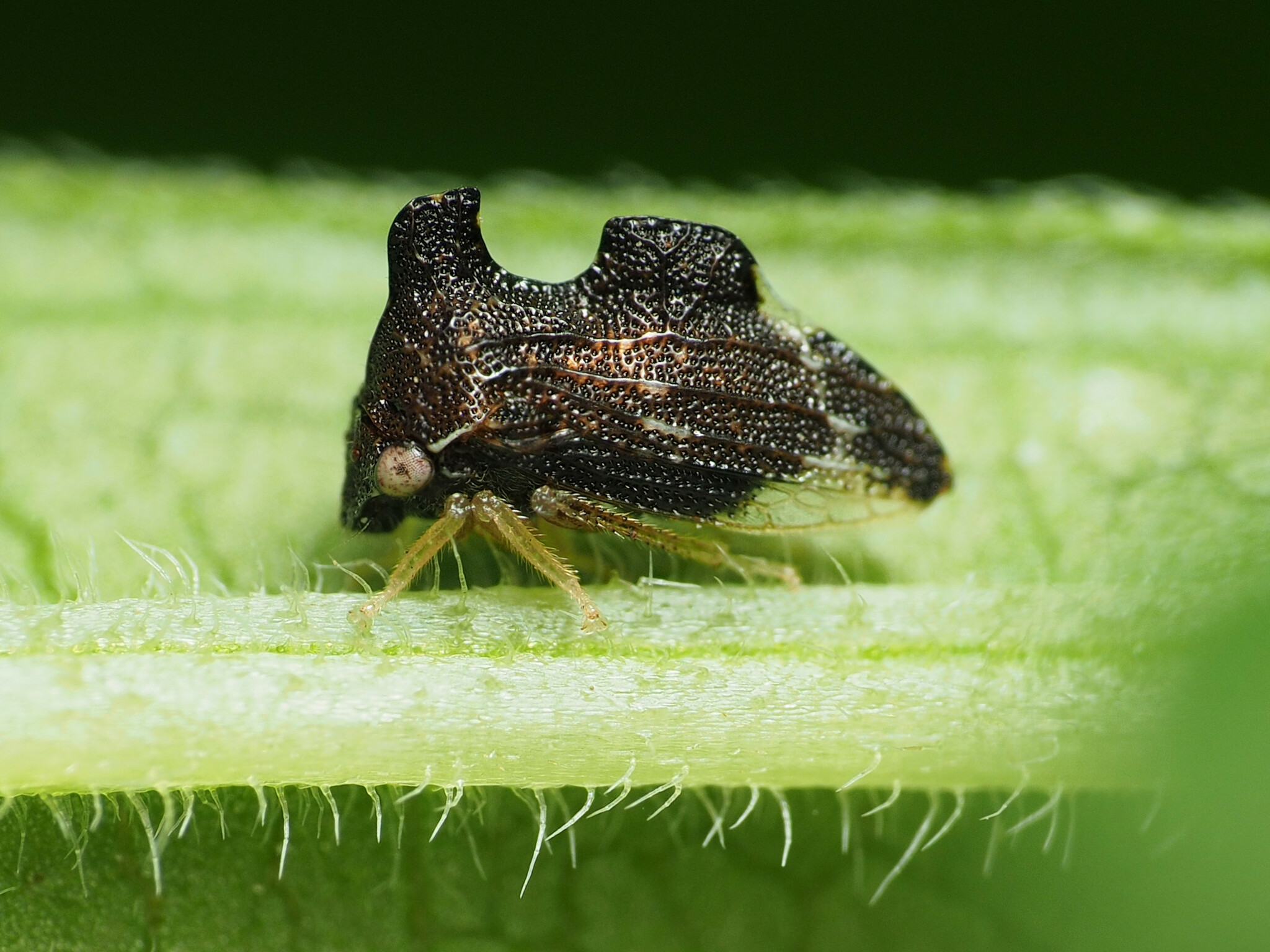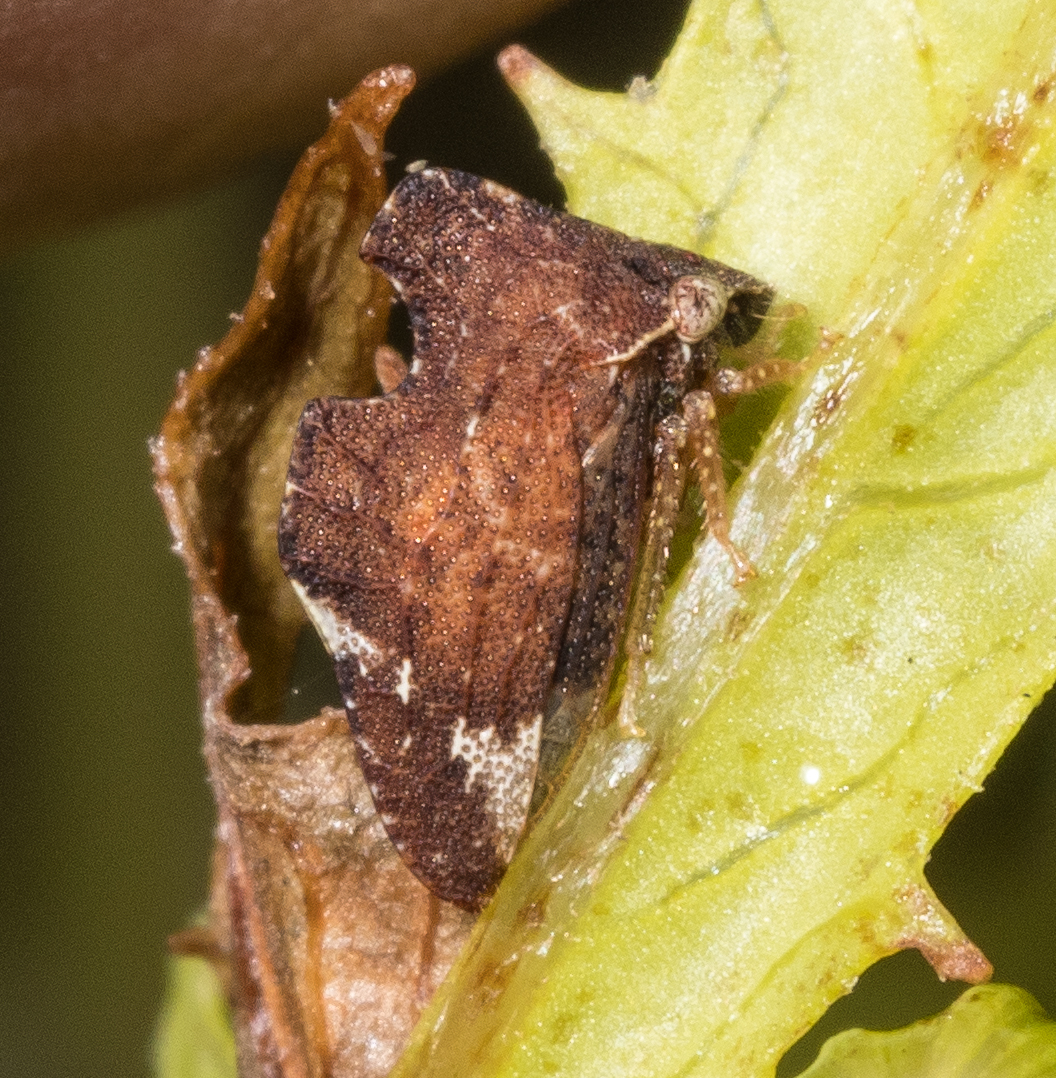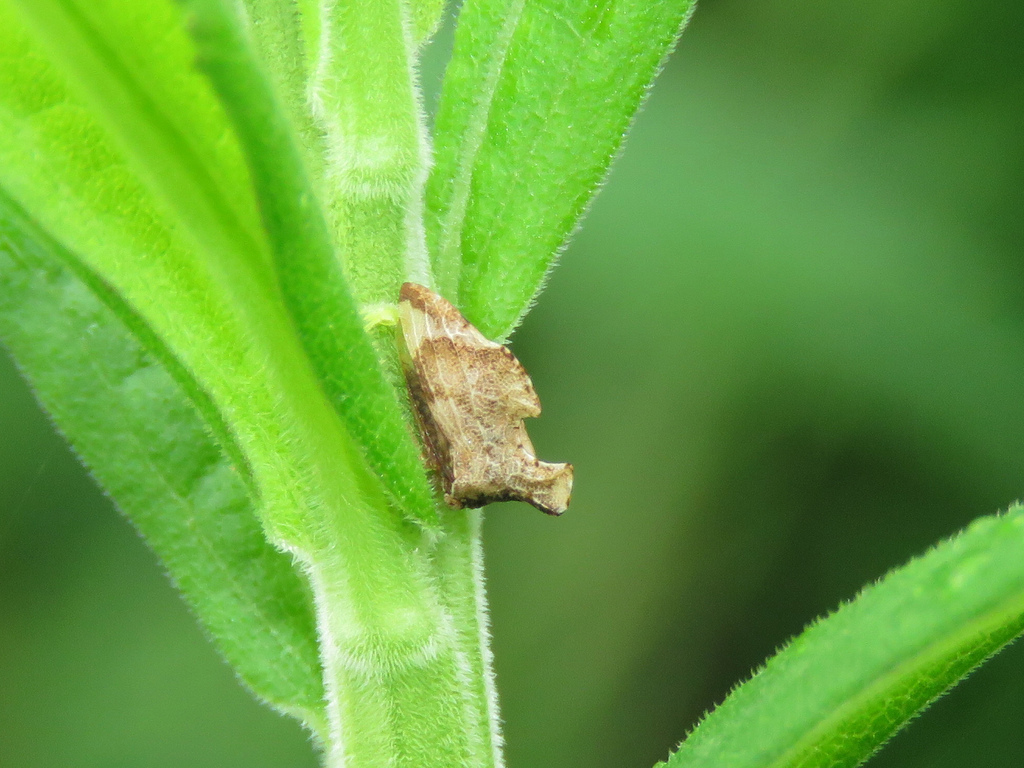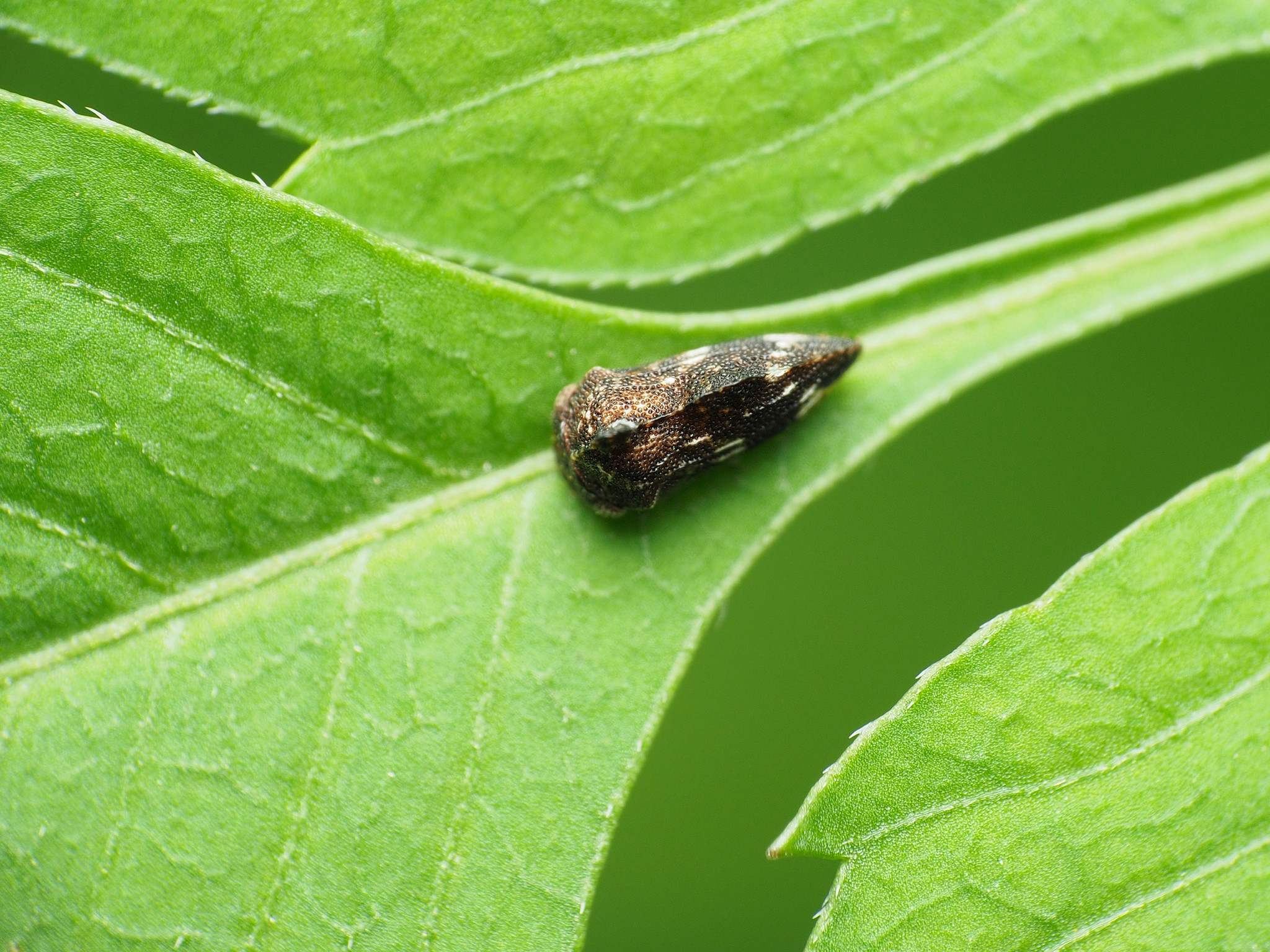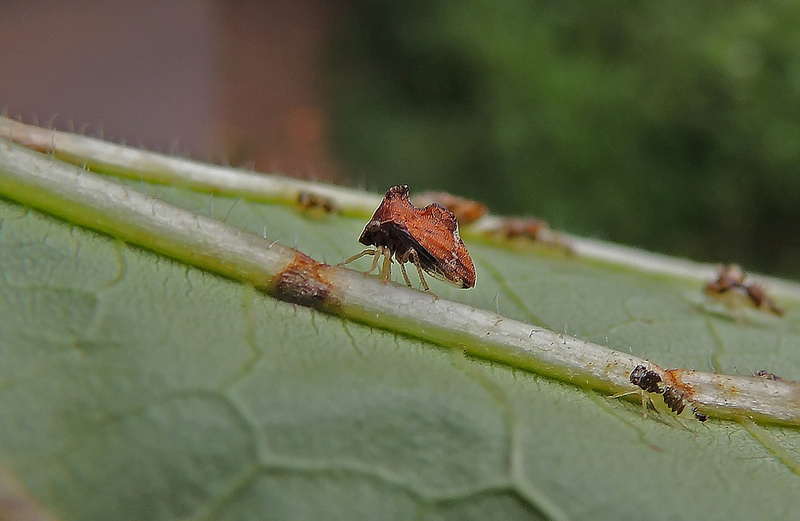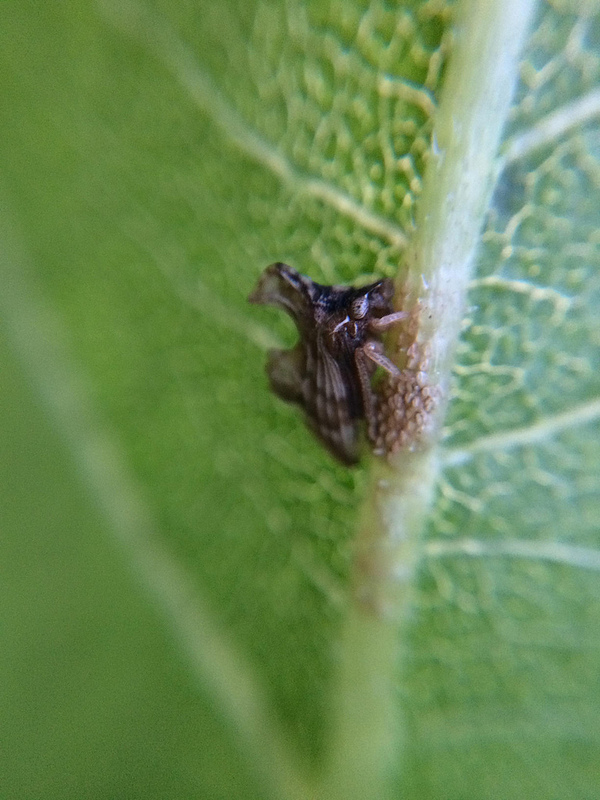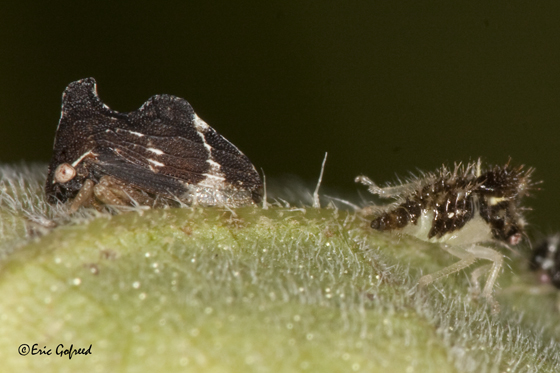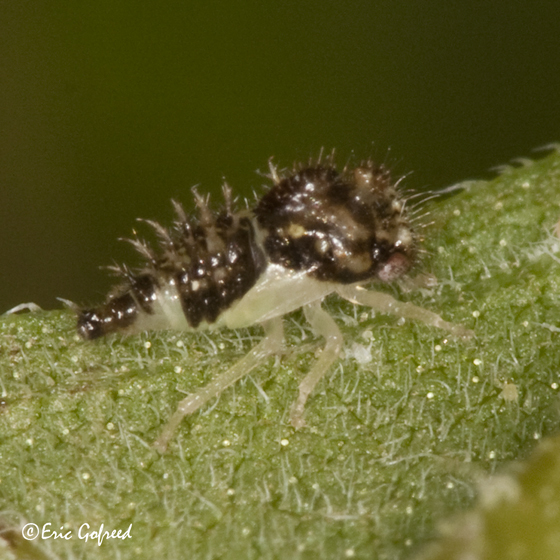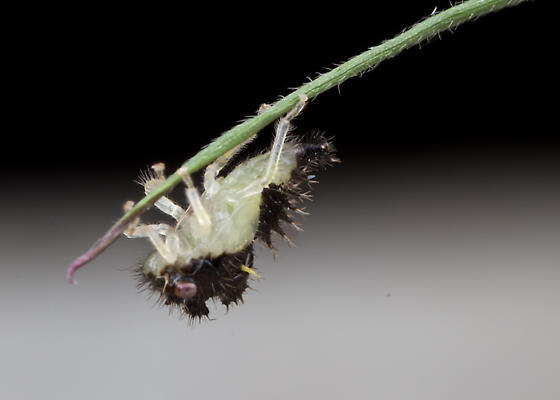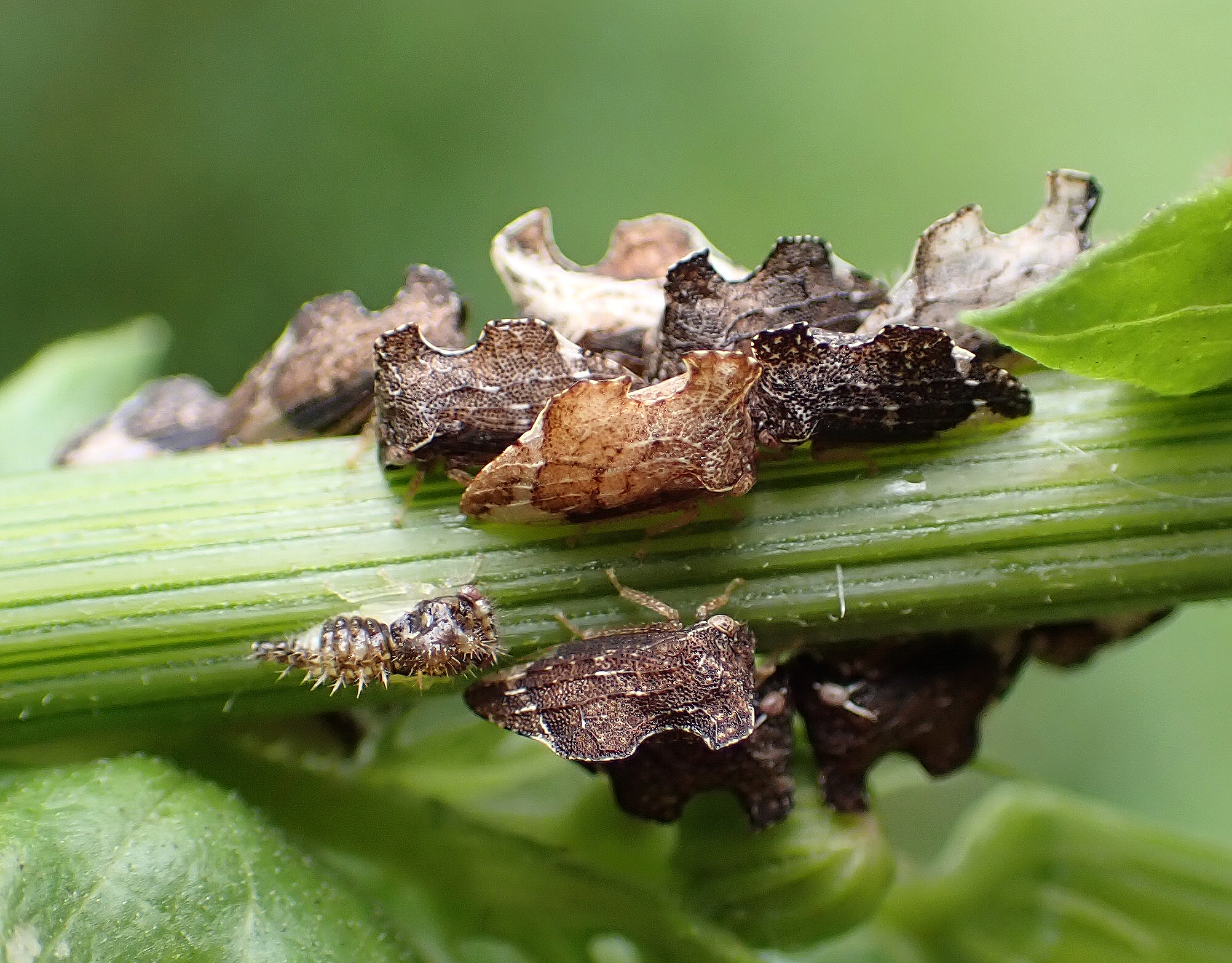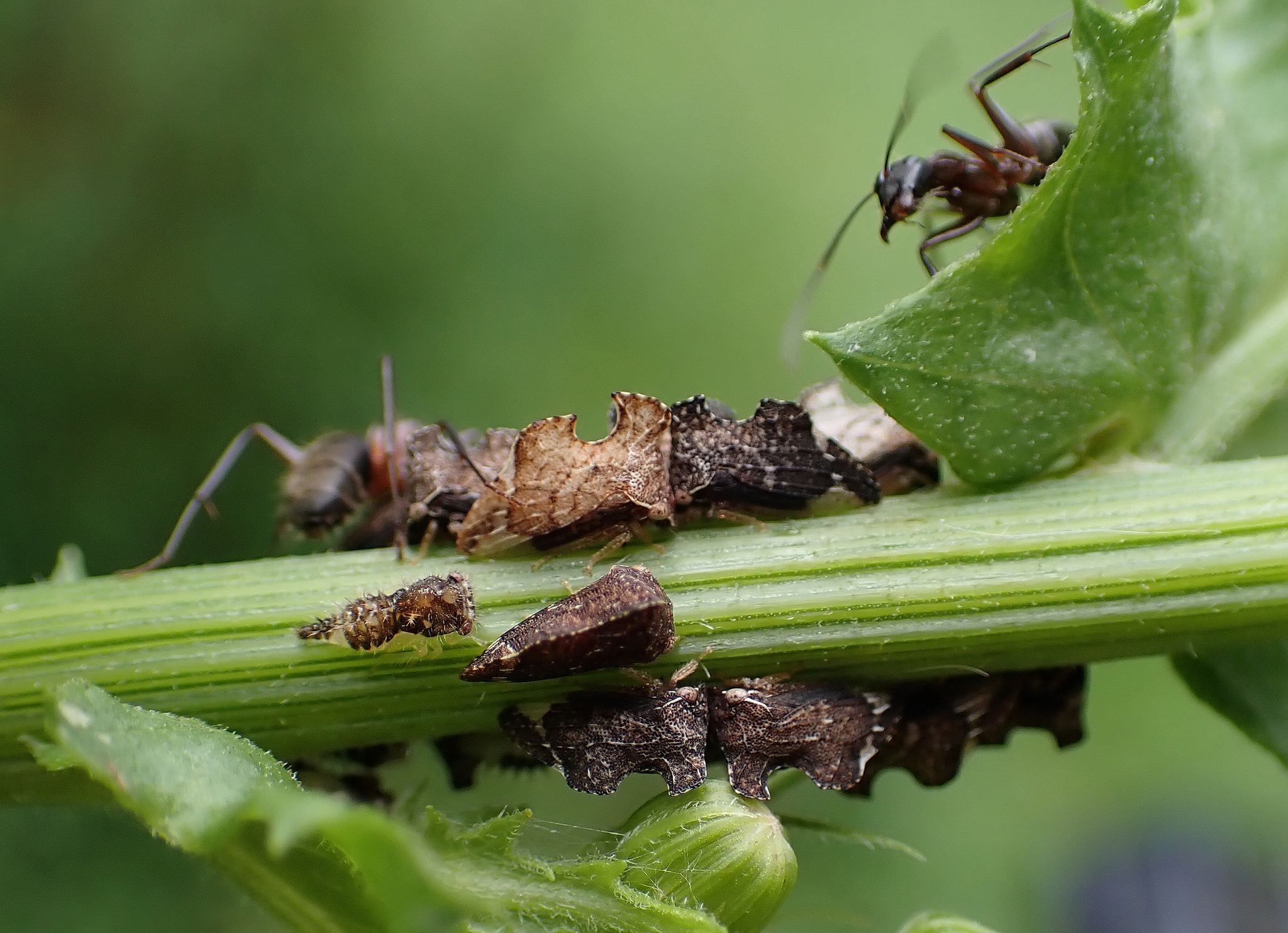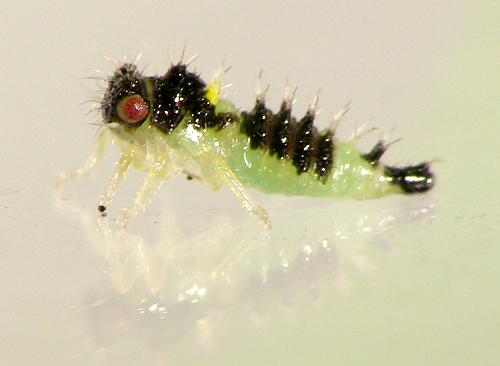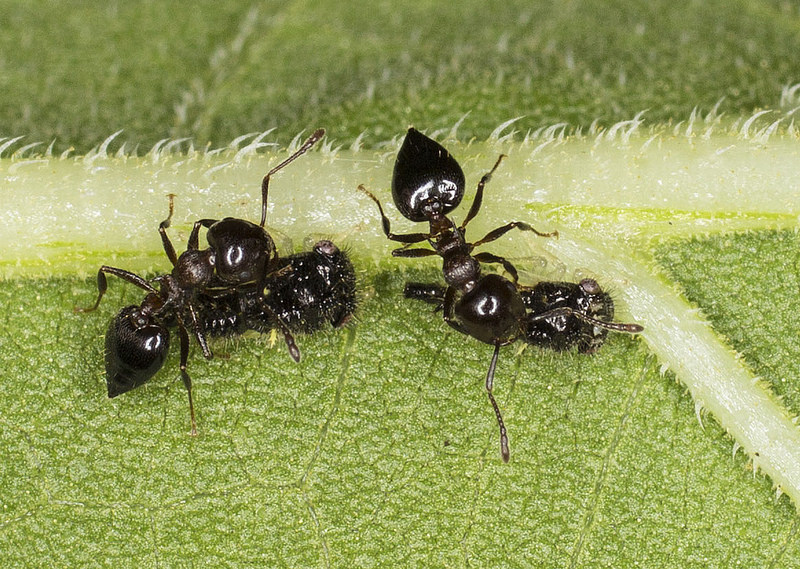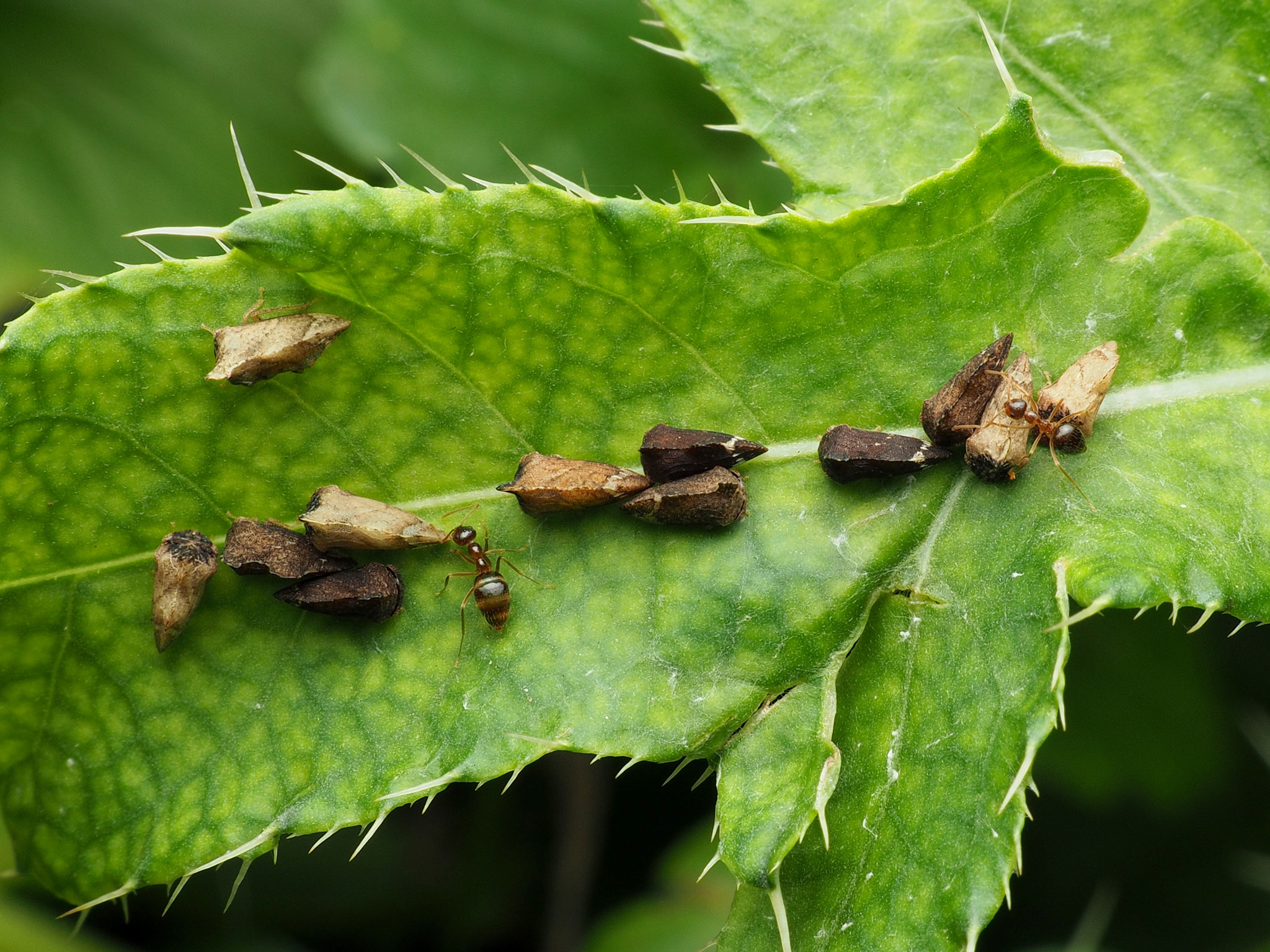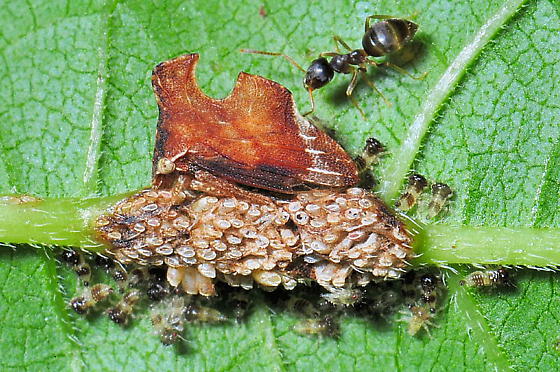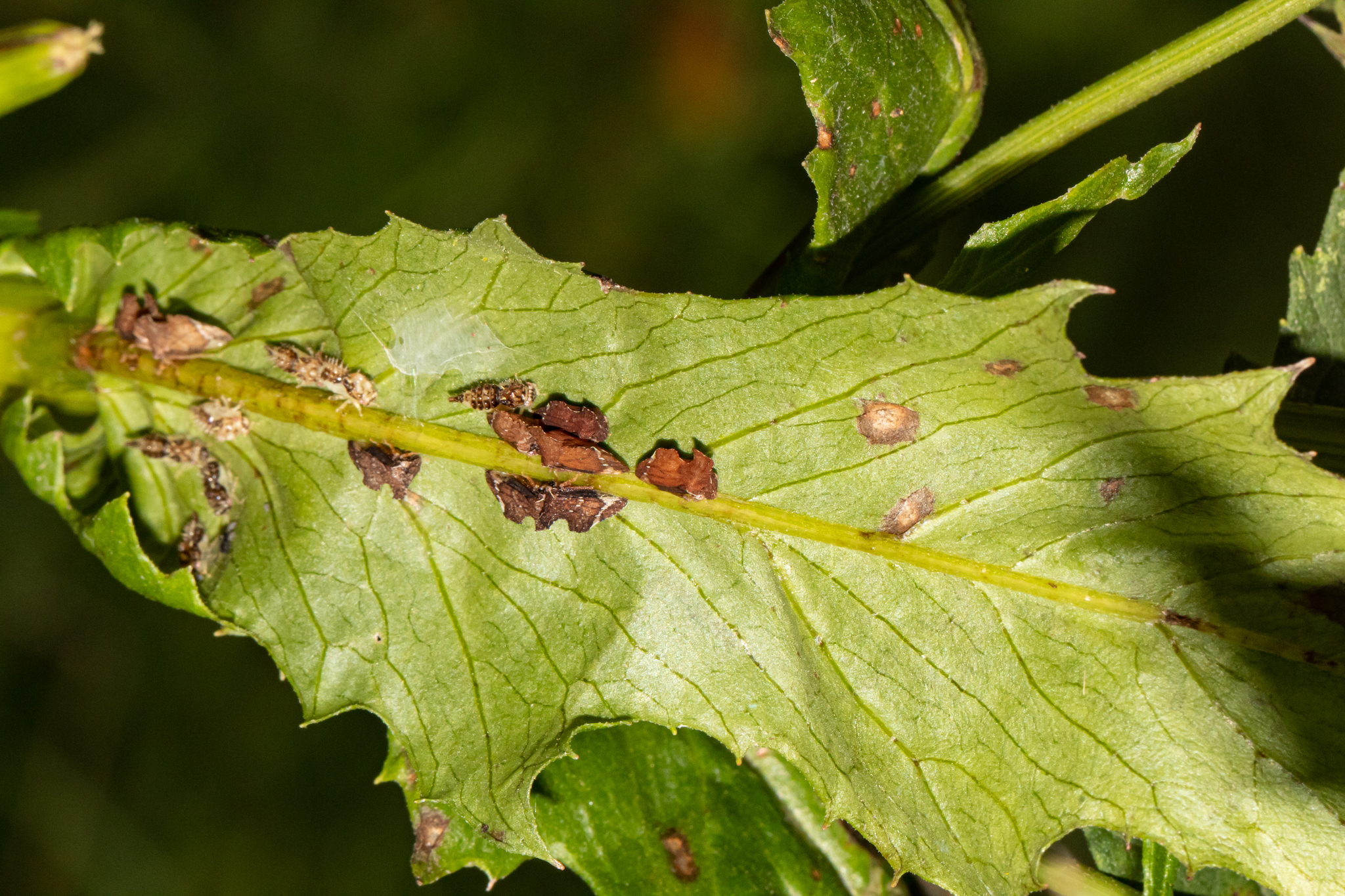Map Snapshot

















136 Records
Seasonality Snapshot
Source: Wikipedia
| Entylia carinata | |
|---|---|

| |
| Scientific classification | |
| Domain: | Eukaryota |
| Kingdom: | Animalia |
| Phylum: | Arthropoda |
| Class: | Insecta |
| Order: | Hemiptera |
| Suborder: | Auchenorrhyncha |
| Family: | Membracidae |
| Genus: | Entylia |
| Species: | E. carinata
|
| Binomial name | |
| Entylia carinata (Forster, 1771)
| |


Entylia carinata, commonly known as the keeled treehopper, is a species of treehopper in the family Membracidae. They can be found in Brazil, Panama, Mexico, the United States, and Canada.[1][2][3][4] Keeled treehoppers are often attended by ants which feed on the honeydew they excrete. In return, the ants offer protection from predators.[5] Keeled treehoppers typically feed on plants in the aster family and they are not known to transmit plant diseases and are not considered significant plant pests.[5]
Biology
[edit]Life cycle
[edit]
As adults, keeled treehoppers spend the winter months in leaf litter and debris, finally emerging in March.[5] They begin to reproduce and implant their eggs on aster leafs.[5] During this time of year plants produce vulnerable growth and soft tissues which make it an optimal time to embed their eggs.[5] Occasionally the laid eggs cause the leaf to fold over, forming a protected environment for the nymphs to develop in once they hatch.[5]
Behavior
[edit]Keeled treehoppers mothers exhibit parental care and spend time protecting their egg masses.[5] They are phloem feeders, and their diet consists of liquids extracted from plants.[6] Plant sap, while a convenient material to feed on, is lacking in many different nutrients including essential amino acids.[7] Because their food source is so nutrient poor, keeled treehoppers rely on gut symbionts in order to supplement their diet.[6]
Host plants
[edit]Keeled treehoppers can be found on plants such as asters, baccharis, fleabane, goldenrod, sunflowers, oaks, dogwood, solanum, dahlias, and many more.[5] However, they exhibit a preference for plants in the family Asteraceae.[5]
Geographic distribution
[edit]These insects can be found in Canada, the eastern United States, Mexico, Central America, and South America.[4]
Morphology
[edit]Keeled treehoppers have unique saddle shaped keels, and are small and brown.[5] The species exhibits sexual dimorphism, females are typically 1/4 of an inch (6.35 mm) long with more pronounced keels while males are smaller, and their keels less noticeable.[5] On occasion, males appear so different that they are misidentified.[5]
Symbiosis
[edit]Like many other species in the family Membracidae, keeled treehoppers have ant-tending mutualism.[6] Ants care for both nymphs and adults.[8] The ant species known to live symbiotically with keeled treehoppers are Camponotus ferrugineus, Formica subsericea, Prenolepis imparis, Tapinoma sessile, and Camponotus pennsylvanicus.[8] Ants feed on treehopper honeydew and assist the treehoppers fending off predators and facilitating feeding.[9] Honeydew feeding not only benefits ants, but also prevents nymphs from becoming trapped in the sticky material and sooty molds from growing on the host plants.[9]
See also
[edit]References
[edit]- ^ "Entylia carinata species details". Catalogue of Life. Archived from the original on 2020-04-10. Retrieved 2018-04-05.
- ^ "Entylia carinata". GBIF. Retrieved 2018-04-05.
- ^ "Entylia carinata Species Information". BugGuide.net. Retrieved 2018-04-05.
- ^ a b "Entylia carinata Overview". Encyclopedia of Life. Retrieved 2018-04-05.
- ^ a b c d e f g h i j k l "Keeled Treehopper". NC State Extension Publications. NC State University. Retrieved 8 September 2020.
- ^ a b c Mao, Meng; Yang, Xiushuai; Bennett, Gordon (2016). "The complete mitochondrial genome of Entylia carinata (Hemiptera: Membracidae)". Mitochondrial DNA Part B. 1 (1): 662–663. doi:10.1080/23802359.2016.1219629. ISSN 2380-2359. PMC 7800129. PMID 33473588.
- ^ Mao, Meng; Yang, Xiushuai; Poff, Kirsten; Bennett, Gordon (June 2017). "Comparative Genomics of the Dual-Obligate Symbionts from the Treehopper, Entylia carinata (Hemiptera: Membracidae), Provide Insight into the Origins and Evolution of an Ancient Symbiosis". Genome Biology and Evolution. 9 (6): 1803–1815. doi:10.1093/gbe/evx134. ISSN 1759-6653. PMC 5533117. PMID 28854637.
- ^ a b Flynn, Dawn; Elliott, Todd F.; Stanley, Allein (2018-11-02). "New host record for Entylia carinata (Forster) (Hemiptera: Membracidae)". Insecta Mundi.
- ^ a b Morales, Manuel A. (2000). "Mechanisms and Density Dependence of Benefit in an Ant–Membracid Mutualism". Ecology. 81 (2): 482–489. doi:10.1890/0012-9658(2000)081[0482:MADDOB]2.0.CO;2. ISSN 1939-9170.
Further reading
[edit]- Arnett, Ross H. Jr. (2000). American Insects: A Handbook of the Insects of America North of Mexico (2nd ed.). CRC Press. ISBN 0-8493-0212-9.
External links
[edit] Media related to Entylia carinata at Wikimedia Commons
Media related to Entylia carinata at Wikimedia Commons
